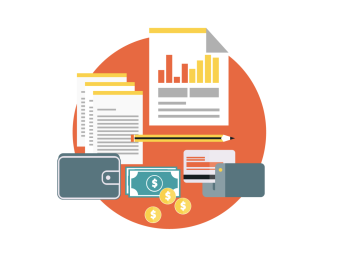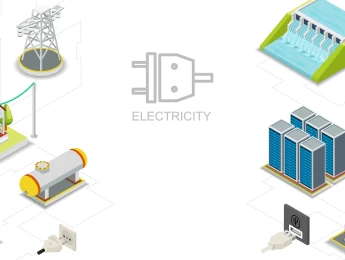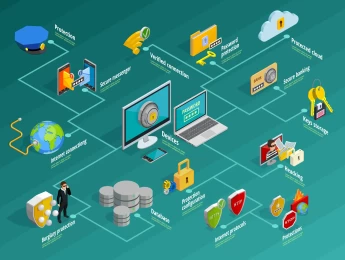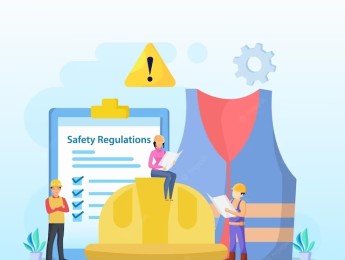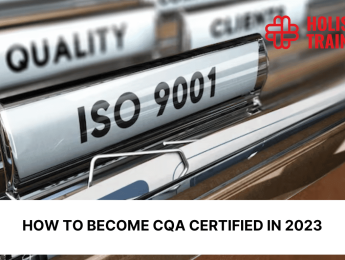- Table of Contents
- What Is Procurement Automation?
- Which Processes Can Be Automated in Procurement?
- 1- Purchase Requisition
- 2- Supplier Selection and Onboarding
- 3- Order Processing
- 4- Invoice Verification and Approval
- 5- Contract Management
- 6- Supplier Performance Monitoring
- 7- Reporting and Analytics
- Benefits of Automating the Procurement Process
- Enhanced Efficiency and Speed
- Cost Savings
- Improved Accuracy and Compliance
- Greater Visibility and Transparency
- Strategic Insights
- Supplier Relationship Management
- Challenges of Procurement Automation
- a) Change Management
- b) Integration Complexity
- c) Data Quality and Standardisation
- d) Security and Compliance
- Steps to Start Implementing Procurement Automation
- 1- Assessment and Strategy Development
- 2- Vendor Selection
- 3- Data Preparation
- 4- Pilot Implementation
- 5- Change Management and Training
- 6- Integration and Testing
- 7- Deployment and Monitoring
- 8- Continuous Improvement
- The Future of Procurement Automation: Trends to Watch
- a. Sustainability Integration
- b. Enhanced User Experience
- c. Integration with Emerging Technologies
- In Conclusion
Introduction
The modern business landscape is marked by relentless transformation, driven by the ceaseless evolution of technology. As organisations strive to remain competitive and adaptable, the spotlight has turned toward redefining and optimising essential operational processes. Among these, the procurement process takes centre stage—a pivotal link in the intricate chain of supply chain management. Traditionally laden with manual tasks, from selecting suppliers to managing invoices, procurement has now undergone a remarkable metamorphosis, empowered by the potential of automation. This seismic shift promises not just efficiency gains, but a litany of advantages for businesses willing to embrace change and wield technology as a strategic ally. In this discourse, we delve deep into the world of procurement automation, exploring its myriad benefits, the processes it can revolutionise, the challenges it presents, and the roadmap for its successful implementation. Join us as we unravel the transformative potential that lies within the realm of automated procurement processes.
What Is Procurement Automation?
Procurement automation refers to the use of technology, such as software and advanced algorithms, to streamline and optimise various aspects of the procurement process. By reducing manual intervention and replacing it with automated workflows, organisations can achieve greater accuracy, speed, and transparency in their procurement operations. This not only frees up valuable human resources but also significantly reduces the likelihood of errors and bottlenecks.
Which Processes Can Be Automated in Procurement?
Virtually every step of the procurement process can be automated to some extent. From requisition to payment, automation can play a pivotal role in enhancing efficiency and minimising the scope for errors. Some of the key processes that can be automated in procurement include:
1- Purchase Requisition
Traditionally, generating purchase requisitions involved cumbersome manual data entry, often resulting in delays and inefficiencies. With the advent of automation, employees can initiate purchase requests through sophisticated digital platforms. This triggers an automated workflow that not only expedites the approval process but also ensures seamless progression of the requisition through various stages. Automation in purchase requisitions minimises human intervention, decreases processing times, and enhances the overall efficiency of the procurement workflow.
2- Supplier Selection and Onboarding
The manual evaluation of potential suppliers is a time-consuming process prone to subjectivity. Automation brings objectivity to this critical stage by facilitating the evaluation of suppliers based on predefined criteria. Automated systems ensure consistency in the supplier selection process, leading to more informed decisions. Moreover, the onboarding of suppliers, a traditionally intricate and paperwork-intensive task, is streamlined through automated processes. From gathering necessary documentation to verifying compliance, the automation of supplier onboarding accelerates the establishment of robust and compliant supplier relationships.
3- Order Processing
Automating order processing eliminates the need for labour-intensive manual entries. Systems equipped with automation capabilities can generate orders based on predefined rules and real-time inventory levels. This not only reduces the risk of human error but also ensures timely fulfilment of orders. Automation in order processing enhances accuracy, minimises processing times, and provides organisations with the agility to respond swiftly to market demands.
4- Invoice Verification and Approval
Manual invoice verification is notorious for being error-prone and time-consuming. Automation in this realm involves matching invoices with corresponding purchase orders and receipts. Discrepancies, if any, are flagged for human review, expediting the approval process. By automating invoice verification and approval, organisations not only reduce the likelihood of errors but also gain greater control over their financial processes. This results in improved accuracy, faster payment cycles, and enhanced relationships with suppliers.
5- Contract Management
The lifecycle of contracts involves intricate timelines, renewal dates, and compliance requirements. Automating contract management systems ensures that these complexities are handled with precision. By automating the tracking of milestones and renewal dates, organisations reduce the risk of missed opportunities or penalties. Automated contract management systems provide a comprehensive overview of contractual obligations, empowering organisations to make informed decisions and maintain compliance effortlessly.
6- Supplier Performance Monitoring
Monitoring and evaluating supplier performance is critical for effective supplier relationship management. Automation in supplier performance monitoring involves the systematic collection and analysis of supplier performance data. Automated systems track key performance indicators (KPIs), enabling organisations to makedata-driven decisions about their supplier relationships. This proactive approach allows for timely interventions when performance issues arise, ensuring continuous improvement and alignment with organisational goals.
7- Reporting and Analytics
Automation extends its benefits to the realm of reporting and analytics by enabling real-time data collection and analysis. Automated systems generate comprehensive reports that offer insights into spending patterns, supplier performance, and other critical metrics. These insights empower decision-makers with the information needed for strategic decision-making. Automation in reporting and analytics provides a holistic view of procurement activities, facilitating the development of informed strategies that drive operational excellence.
In summary, the automation of procurement processes revolutionises traditional practices across various stages of the procurement lifecycle. By leveraging technology, organisations not only enhance efficiency and accuracy but also lay the foundation for strategic decision-making in the dynamic landscape of modern business.
Benefits of Automating the Procurement Process
The adoption of procurement automation can yield a multitude of benefits that positively impact an organisation's bottom line, operational efficiency, and strategic decision-making.
Enhanced Efficiency and Speed
Automation serves as the catalyst for a paradigm shift in procurement efficiency. By reducing manual intervention and streamlining processes, organisations experience faster cycle times and a substantial reduction in overall processing time. This newfound agility empowers organisations to respond promptly to changing market conditions and dynamic customer demands. Tasks that once took days can now be accomplished in hours, fostering a more nimble and responsive procurement environment.
Cost Savings
A recent survey mentioned in an article byProkuria discovered that a significant portion—two-thirds—of professionals in procurement, supply chain, and finance in the UK continue to depend on manual and paper-based procurement procedures. This reliance results in an annual average cost of £1.94 million for businesses, simultaneously curtailing professionals' potential to provide greater strategic contributions. In addition to that, manual procurement processes often result in administrative overhead, errors, and inefficiencies. Automating all these processes reduces labour costs, minimises errors, and optimised resource allocation, ultimately leading to cost savings. Also, according toVeridion, the adoption of automated procurement solutions has the potential to substantially decrease the average cost of processing a purchase order. Organisations without automation incur an average cost of $107, while those leveraging automation could bring it down to $32.
Improved Accuracy and Compliance
One of the most compelling advantages of procurement automation lies in its ability to eliminate human errors inherent in manual data entry and processing. Automation enforces predefined rules and compliance checks consistently across all processes, ensuring a higher degree of accuracy. This not only mitigates the risk of errors but also enhances compliance with regulatory requirements. The automated validation of every transaction against predefined criteria establishes a robust framework for adherence to industry regulations and internal policies.
Greater Visibility and Transparency
Automation acts as a transparent window into the entire procurement lifecycle. Automated systems provide real-time visibility into orders, invoices, and supplier performance. This transparency enables organisations to better track and monitor their procurement activities, fostering accountability among stakeholders. Decision-makers gain insights into the status of procurement processes, allowing for proactive interventions when necessary. The result is a more transparent and accountable procurement ecosystem.
Strategic Insights
The advent of automation brings with it a wealth of strategic insights derived from real-time data collection and reporting. Organisations can gain a deeper understanding of spending patterns, supplier performance, and market trends. These insights empower decision-makers to formulate data-driven strategies that align with organisational goals. Procurement becomes not just a reactive function but a strategic driver, leveraging data analytics to stay ahead of industry trends, optimise processes, and make informed decisions that impact the entire business ecosystem positively.
Supplier Relationship Management
Automation liberates organisations from the shackles of administrative tasks, allowing them to focus on nurturing strategic supplier relationships. By automating routine tasks, procurement professionals can invest more time and effort in building collaborative partnerships with suppliers. This shift from transactional to relational interactions fosters improved collaboration, innovation, and value creation. Strong supplier relationships become a cornerstone of success, leading to enhanced product quality, innovation, and a competitive edge in the market.
In short, the benefits of automating the procurement process extend beyond mere operational efficiency. The transformative impact encompasses cost savings, improved accuracy, and the elevation of procurement to a strategic function within the organisation. As businesses navigate the complexities of the digital age, harnessing the power of procurement automation becomes not just a choice but a strategic imperative for sustained growth and competitive advantage.
Challenges of Procurement Automation
While the benefits of procurement automation are compelling, it's important to acknowledge that the implementation journey is not without its challenges.
a) Change Management
Introducing automation into the procurement process often necessitates a cultural shift within the organisation. Employees accustomed to traditional manual processes may resist this change due to fear of job displacement or unfamiliarity with new technologies. Effectivechange management strategies are essential to navigate this challenge successfully. Organisations need to communicate the benefits of automation, provide adequate training, and create a supportive environment that encourages employees to embrace the technological shift. Proactive engagement with employees helps build a collective understanding of the positive impact automation can have on their roles and the overall efficiency of the procurement function.
b) Integration Complexity
Integrating automation solutions with existing systems and processes can be complex. Many organisations have a variety of legacy systems, each serving a specific purpose within the procurement ecosystem. Ensuring seamless connectivity between these disparate platforms is crucial to prevent data silos and disruptions in workflow. Integration challenges may arise due to differences in data formats, protocols, or system architectures. Overcoming this challenge requires meticulous planning and collaboration between IT and procurement teams. Organisations must invest in robust integration solutions that not only bridge the technological divide but also ensure a smooth and coordinated flow of data across the entire procurement infrastructure.
c) Data Quality and Standardisation
Automation heavily relies on accurate and standardised data. Incomplete or inconsistent data can lead to errors, inefficiencies, and, in some cases, system failures. Before implementing automation, organisations must invest time and resources in data cleansing and standardisation efforts. This involves identifying and rectifying data discrepancies, removing duplicate entries, and ensuring data integrity across all procurement processes. Establishing clear data governance policies and practices is paramount to maintaining data quality over time. By addressing data quality concerns proactively, organisations can lay a solid foundation for successful automation implementation.
d) Security and Compliance
Automating procurement processes introduces new considerations for data security, especially when handling sensitive supplier and financial information. Robust cybersecurity measures are essential to protect against potential threats such as data breaches or unauthorised access. Compliance with industry regulations and data protection laws adds an additional layer of complexity. Ensuring that automated systems adhere to legal and regulatory requirements requires continuous monitoring and updates. Collaboration between IT security experts, legal teams, and procurement professionals is crucial to establish comprehensive security and compliance protocols. Implementing encryption, access controls, and regular security audits are essential steps to mitigate risks associated with the increased digitisation of procurement processes.
In addressing these challenges, organisations can navigate the path to procurement automation more effectively. A holistic approach, encompassing change management, integration strategies, data quality initiatives, and robust security measures, ensures a smoother transition and sets the stage for the long-term success of automated procurement processes. By proactively addressing challenges, organisations can maximise the benefits of automation while minimising potential pitfalls, paving the way for a streamlined and efficient procurement ecosystem.
Steps to Start Implementing Procurement Automation
Implementing procurement automation requires a well-thought-out plan to ensure successful adoption and realisation of benefits.
1- Assessment and Strategy Development
The first crucial step is to conduct a thorough assessment of the current state of procurement processes. Identify pain points, inefficiencies, and areas that could benefit from automation. Define clear objectives and desired outcomes for the automation initiative. A comprehensive strategy should be developed, outlining the specific processes to be automated, the technologies required, and the expected benefits. Engage key stakeholders, including procurement professionals, IT experts, and end-users, to gather diverse perspectives and insights.
2- Vendor Selection
Research and select automation vendors or solutions that align with the organisation's needs and goals. Consider factors such as scalability, integration capabilities, ease of use, and customer support. Vendor selection is a critical decision that impacts the success of the automation initiative. Conduct thorough evaluations, request demonstrations, and seek references from other organisations that have successfully implemented similar solutions. Choose vendors that not only meet current requirements but also offer scalability and flexibility to adapt to future needs.
3- Data Preparation
Cleanse, standardise, and organise data to ensure accuracy and consistency. Proper data management is essential for successful automation implementation. Identify and rectify any data discrepancies, remove duplicate entries, and establish a robust data governance framework. Data preparation ensures that the automated system operates with reliable inputs, minimising the risk of errors and inefficiencies. Collaborate with data specialists and involve end-users to validate the quality and relevance of the data.
4- Pilot Implementation
Initiate a pilot implementation of the chosen automation solution to test its functionality and compatibility with existing systems. The pilot phase allows organisations to identify any challenges, gather feedback from users, and make necessary adjustments before full deployment. Select a representative sample of procurement processes for automation to gauge the system's effectiveness in a controlled environment. Use key performance indicators (KPIs) to measure the success of the pilot and gather insights for refining the implementation strategy.
Table 1: Key Performance Indicators (KPIs) for Pilot Implementation
KPI | Description | Measurement Metric |
Process Efficiency | Evaluate the time taken for automated processes vs. manual | Average Time Reduction |
Data Accuracy | Assess the accuracy of data processed by the system | Percentage Error Reduction |
User Satisfaction | Measure end-users' satisfaction with the new automation | User Feedback Scores |
System Reliability | Examine the system's reliability and uptime during the pilot | Downtime Percentage |
Compliance Adherence | Evaluate the system's adherence to compliance requirements | Compliance Check Results |
5- Change Management and Training
Educate employees about the benefits of automation and provide training to ensure they are comfortable using the new systems. Address any concerns or resistance proactively through effective change management strategies. Communicate the positive impact of automation on their roles, emphasising how it enhances efficiency and allows them to focus on more strategic tasks.Training sessions should be tailored to different user groups, ensuring that end-users, managers, and IT personnel understand their specific roles and responsibilities in the automated procurement ecosystem.
6- Integration and Testing
Integrate the chosen automation solution with existing systems and perform thorough testing to ensure seamless data flow and functionality across platforms. Conduct comprehensive testing scenarios, including end-to-end testing of automated workflows, data integrity checks, and stress testing to assess system robustness. Collaboration between IT teams, procurement professionals, and external vendors is crucial during this phase. Identify and address any integration challenges promptly to prevent disruptions in the procurement workflow.
7- Deployment and Monitoring
Roll out the automation solution gradually across the organisation. Monitor its performance closely and gather feedback from users to make continuous improvements. Establish key performance indicators (KPIs) to assess the impact of automation on efficiency, accuracy, and overall procurement outcomes. Regularly communicate updates to users and address any issues that may arise during the initial deployment phase. The deployment stage is an opportunity to fine-tune the system based on real-world usage and user feedback.
8- Continuous Improvement
Procurement automation is not a one-time project; it's an ongoing journey. Regularly assess the solution's performance, gather insights from data analytics, and identify areas for enhancement. Establish a feedback loop that involves end-users, procurement professionals, and IT teams to continuously improve the system based on evolving business needs. Keep abreast of updates from automation vendors and incorporate new features or functionalities that align with the organisation's goals. Embrace a culture of continuous improvement to ensure that the procurement automation system remains aligned with the dynamic nature of business processes.
In short, the successful implementation of procurement automation requires careful planning, collaboration, and a commitment to ongoing improvement. By following these steps, organisations can navigate the complexities of automation adoption, maximise the benefits, and position themselves for sustained growth and competitiveness in the digital age.
The Future of Procurement Automation: Trends to Watch
As we look ahead, several trends are shaping the future of procurement automation. Keeping an eye on theseprocurement trends can help organisations stay ahead of the curve and continue to reap the benefits of automation:
a. Sustainability Integration
The focus on sustainable and ethical procurement is growing. Automation will play a crucial role in tracking and ensuring compliance with sustainability goals, as organisations increasingly prioritise environmentally responsible supply chain practices.
b. Enhanced User Experience
Future procurement automation solutions will prioritise user experience, offering intuitive interfaces and seamless integration with other business systems. This focus on usability aims to enhance adoption rates and overall satisfaction among end-users.
c. Integration with Emerging Technologies
The integration of procurement automation with emerging technologies such as theInternet of Things (IoT) and 5G will open new possibilities. Enhanced connectivity and real-time data access will further optimise supply chain processes and decision-making.
In summary, the landscape of procurement automation is dynamic, with continuous innovation and advancements. By staying informed about the latest developments, organisations can position themselves to leverage cutting-edge technologies and stay competitive in an ever-evolving business environment.
In Conclusion
Procurement automation offers organisations the opportunity to revolutionise their procurement processes, unlocking benefits that range from increased efficiency and cost savings to improved accuracy and strategic insights. While the challenges of implementation cannot be ignored, a well-planned approach, coupled with effective change management, can pave the way for successful adoption. As businesses continue to adapt to the digital age, harnessing the power of automation in procurement is a strategic move that can position organisations for sustained growth and competitive advantage.








